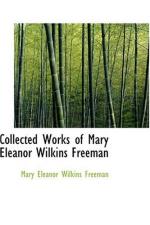|
This section contains 5,890 words (approx. 20 pages at 300 words per page) |

|
SOURCE: “Beyond Stereotypes: Mary Wilkins Freeman's Radical Critique of Nineteenth-Century Cults of Femininity,” in Women's Studies, Vol. 21, No. 9, 1992, pp. 383–95.
In the following essay, Cutter probes Freeman's attitudes toward post-Civil War stereotypes of femininity, focussing on “The Selfishness of Amelia Lamkin.”
The nineteenth century was undoubtedly a time period when images of femininity became particularly fixed. During the first half of the century, changing economic conditions created a cult-like worship of “True Womanhood” and entrapped women in the domestic sphere, where they were to dispense love and morality.1 And yet, even in the post-civil war era when the predominant stereotype of the “True Woman” gave way to the “New Woman” and women began to enter the work-force in greater numbers, they were not set free from constraining images of femininity.
Much critical attention has been paid to Mary Wilkins Freeman as a writer of the post-civil war period of...
|
This section contains 5,890 words (approx. 20 pages at 300 words per page) |

|


